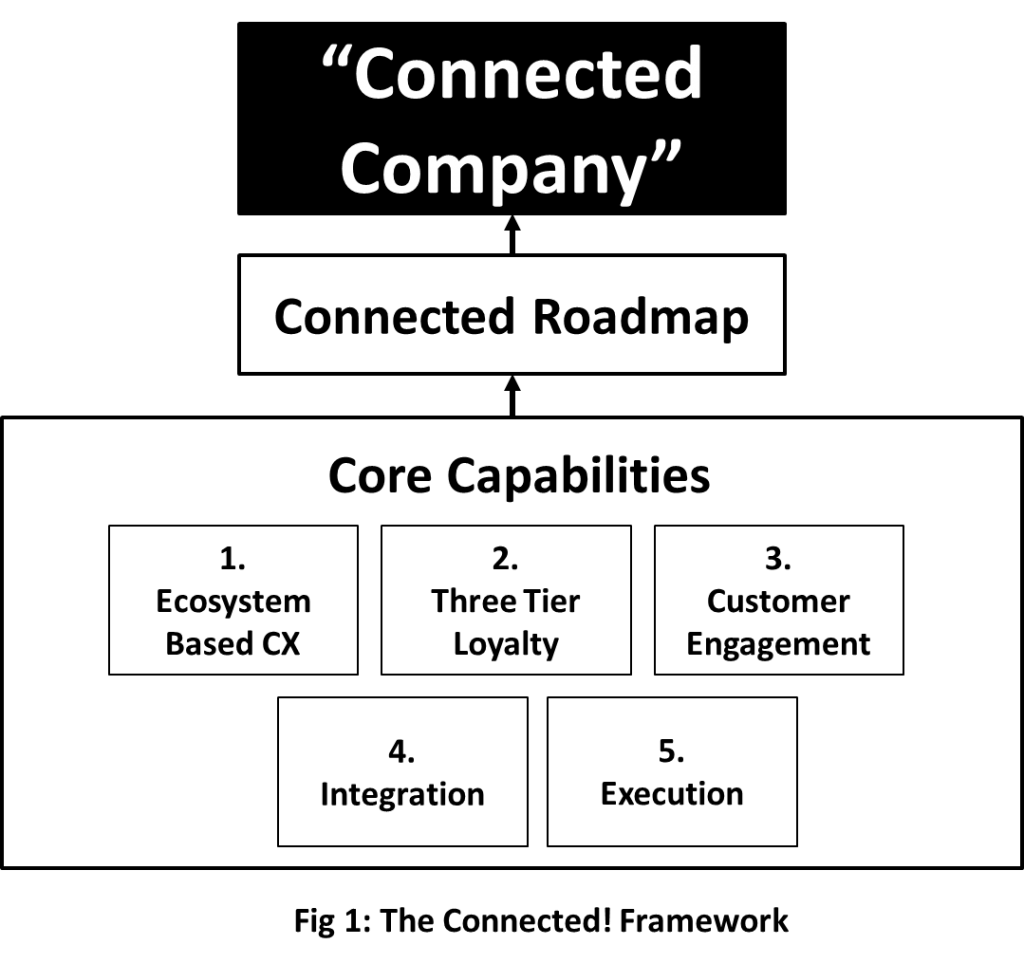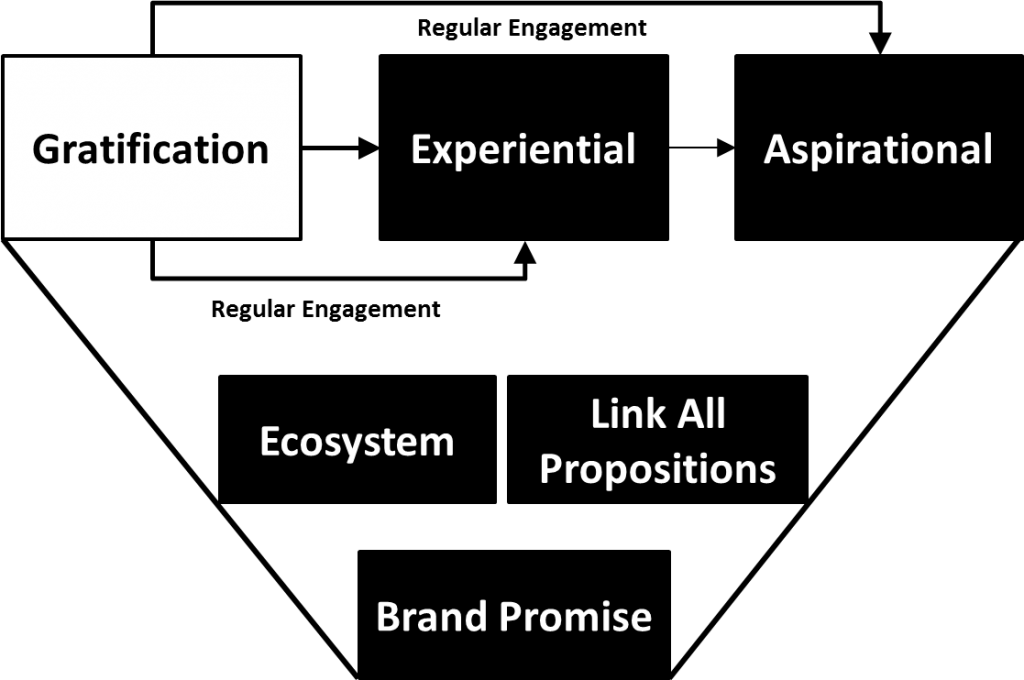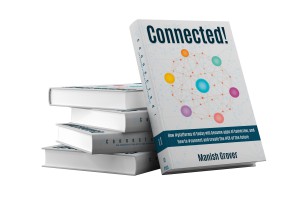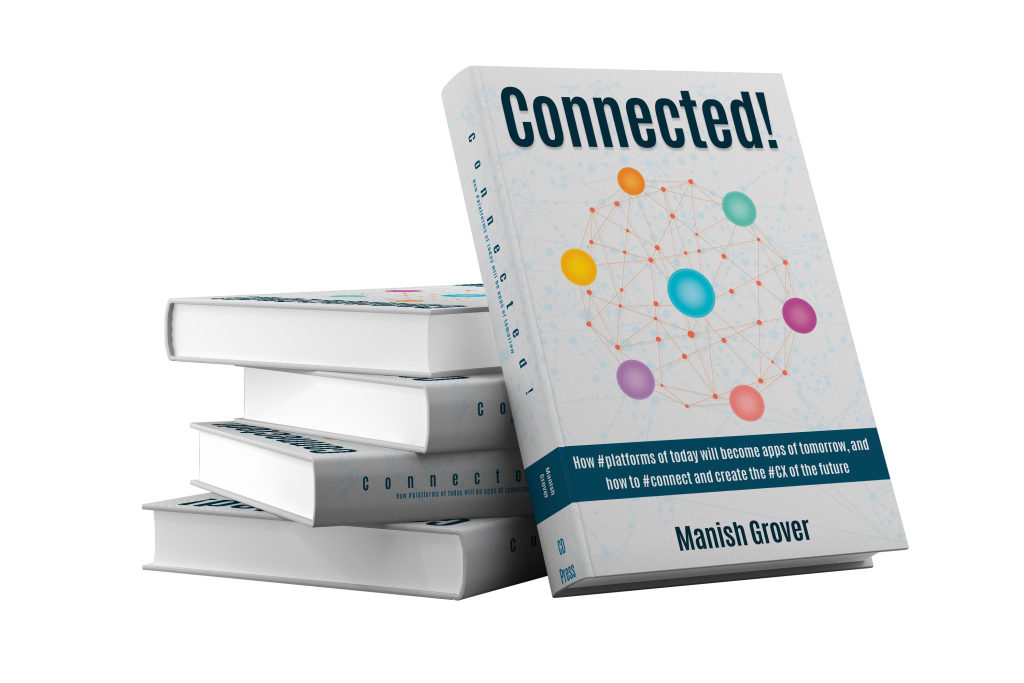
Here’s how to create amazing customer experience and loyalty.
- Create cross industry customer personas and journeys
- Build 3-Tier loyalty models to move beyond discounts and engaging on aspirations
- Engage customers in context of an ecosystem and eliminate needs for external reinforcement
- Create a new social face by linking not only your own, but products from other companies as well
- Succeed with this complex transformation through CX focused org design
This is not just a fact dumping book, nor is it a glorified list of trends everyone is talking about. Instead, what this book covers is how to think about these disruptive trends and what to do to not only survive, but stay ahead.
Isolated brand platforms of today will be inadequate to drive customer engagement and commerce of the connected future. Instead, we must aim to become parts of larger ecosystems and inter-connected platforms.
How can we create these new platforms?
The “Connected Company” framework in this book shows you 5 building blocks that will systematically help you build amazing customer experience and loyalty.
How Does a Connected Company Handle Customer Experience and Loyalty?
As you’re probably noticing all around you, the brands that are succeeding are those that are able to connect with other brands and platforms. Customers don’t like closed systems, nor do innovators and disruptors. Physical stores that act in isolation are closing, Walmart is now launching a multi-vendor marketplace, Amazon is connecting with banks, Apple & Google are connecting with firms that make up a home, banks are opening up their data with APIs, and we all hear of how blockchain will help us give the customer identity back to customers.
We must think of our strategy differently: engage and interact with customers across the entire customer journey, not just on the touch-points that address our own company and products.
We must think of our own brand platform as only a part of the overall customer identity.
- The future is about creating a brand platform that helps people connect, and the future of every platform lies in being able to connect with other platforms
- That’s because our own products and services exist to meet a specific need our users have. To build context and personalization around that need, we must seek to address the broader customer experience.
- We have lots of tools today to act like a vendor in a noisy marketplace – shouting (better) for attention. However, the key is to create meaningful magic so we draw our customers in on their own.
- Extending our brand is not just a choice. In the future, the dominance of the most dominant individual platforms will automatically reflect this reality of being only one of many to provide a service.
The strategies in this book address these crucial challenges.
How #platforms of today will become apps of tomorrow, and how to #connect and create the #CX of the future
Chapter 1: Ecosystem based CX
Our customers are interacting seamlessly across industry boundaries. So why should we develop a persona, and then act on it in isolation? It’s not OK anymore to continue with that dated practice.
In chapter 1, I’ll outline how to move beyond traditional customer personas and customer journeys. As our world becomes connected, we must create extended personas that address this new cross-industry customer experience and loyalty.
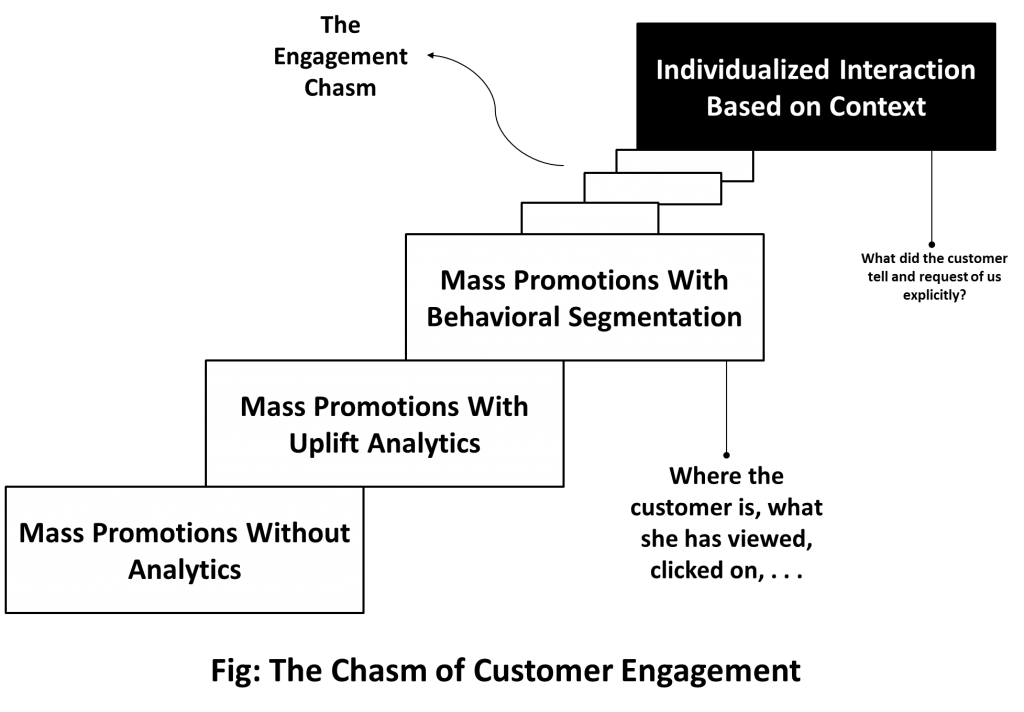
Chapter 2: The 3-Tier model of customer loyalty
Every business needs loyal customers. But are you struggling to wean your customers away from daily deals and discounts? Do you want to be a partner in your customers’ journey towards their goals?
In this chapter, I outline how to create loyalty models that tap into aspirations and motivations of our customers, and not just on the next 20% discount. And we’ll do all that in a connected fashion. You know that 3rd party platforms you sell on or reach your customers on are making inroads into your business. You actually helped build these platforms. But now, as many of these platforms make investments to change the rules on you, will you comply, or will you be able to take a stand. Its not the platforms’ fault. They are doing what’s best for their business. The real question is: Are you?
Here’s how to think about your customer experience and loyalty program:
Chapter 3: Customer engagement and external reinforcement
In a connected world, the notion of customer engagement and parameters of engagement have dramatically changed. We’ve come a long way since the days when the metrics were around number of touch-points, sales funnel metrics, traffic, NPS, and click through rates.
In chapter 3, I’ll outline The Connected Model of Customer Engagement. I’ll show you how emotional and physical engagement touch-points should and can complement each other. And I’ll show you how to reinforce customer confidence in your brand so you can become a reference anchor in your customers’ minds.
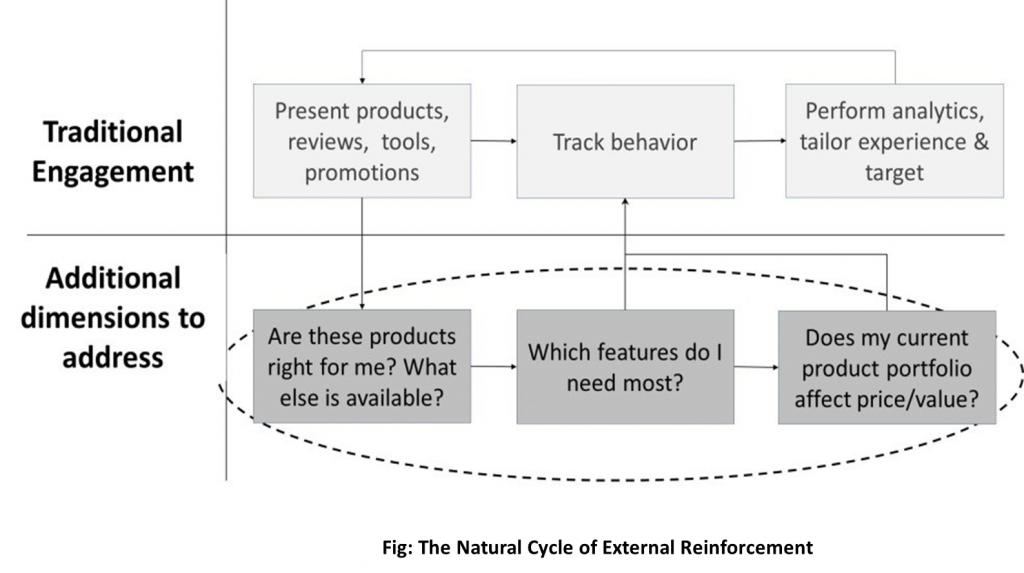
Chapter 4: Leveraging the power of those around you
We’ve been conditioned to operate in ways that meet our direct goals. And it is resulting in disconnected customer experiences. We only have to look at the cross-sell and collaboration efforts at our organizations as examples. In the old school, we operate by product or business line, and then we structure everything else downstream to align with that approach. .
In chapter 4, I’ll outline the concept of Integration which will show how to instead unify the combined appeal of all your products and services. In addition, I’ll show you how to extend the value of your portfolio by leveraging the power of partnerships.
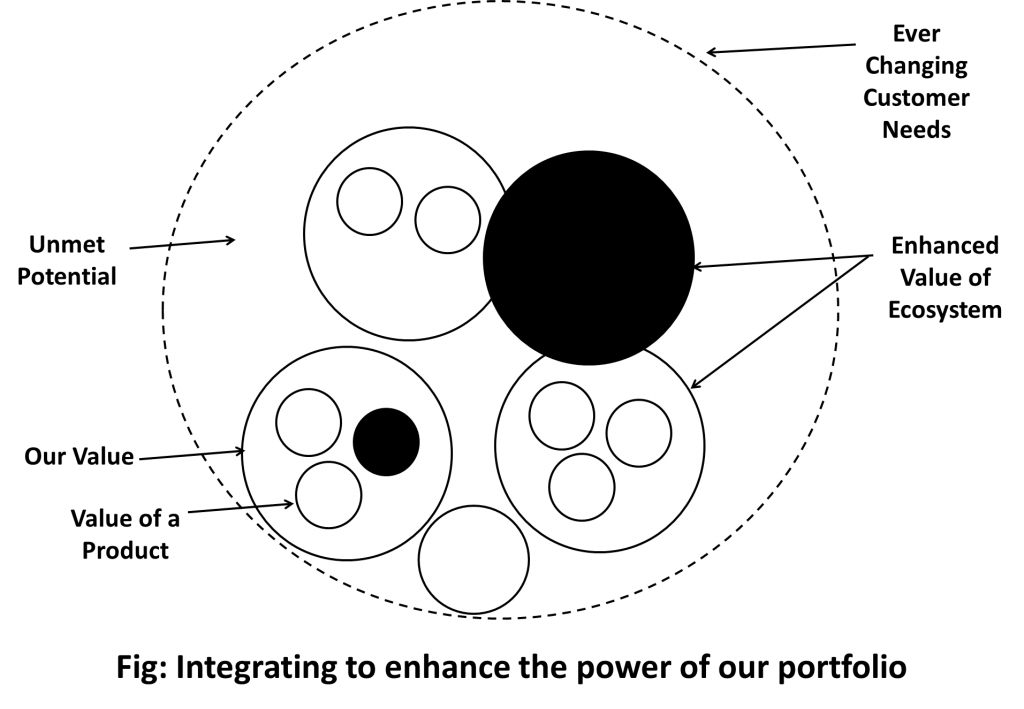
Chapter 5: Execution – The difference between success and failure
Change is not easy. Plans don’t work because we torpedo them ourselves. The baggage of the past is multi-dimensional – technology, processes, incentives, culture, skills, and so on. We always resist new things. Some might draw an analogy with a frog in boiling water: if the water heats up slowly the frog won’t jump out until it is too late.
In this chapter, I’ll address the critical question of Execution. Without beating around the bush, my advice is from the trenches. I outline three pillars of execution to solve this problem. We will explore the concept of creating Connected Communities, what CX focused organizational design looks like, and the concept of the Connected Scorecard that makes making progress a visible requirement.
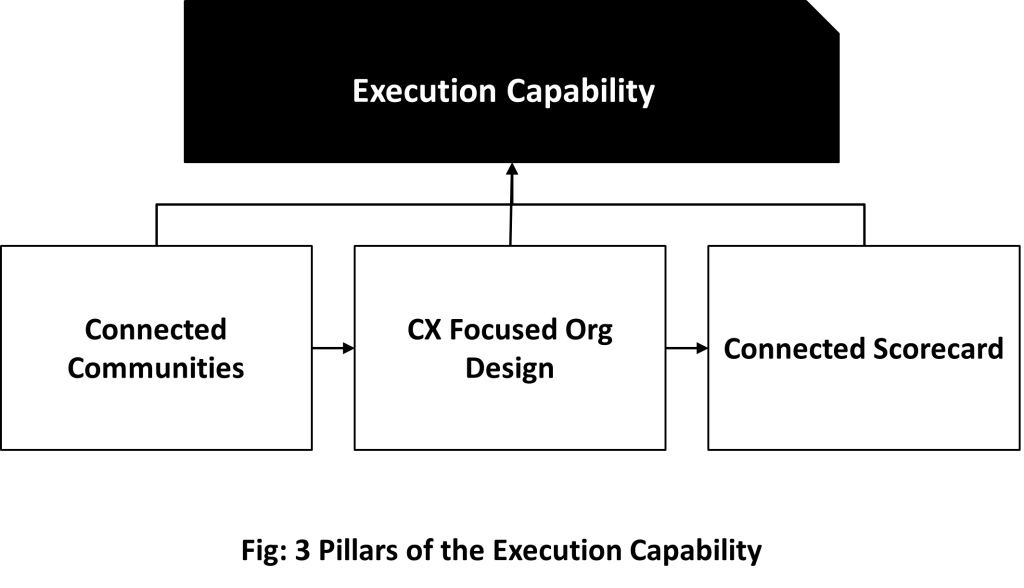
The Connected Roadmap
It may seem like technology is moving too fast and your past is slowing you down. But think about it. Technology is never the business unless it is. If you can visualize the art of the possible, and are able to think through your plan of action, everything else will fall into place. Because people are behind everything, and the best businesses have been disrupted because people didn’t act, not because technology left them behind.
This book provides simple and powerful constructs to help us not only think about these issues but actually start making progress towards staying relevant. The overall “Connected Company” framework provides a powerful way to start building true customer engagement and a powerful ecosystem.
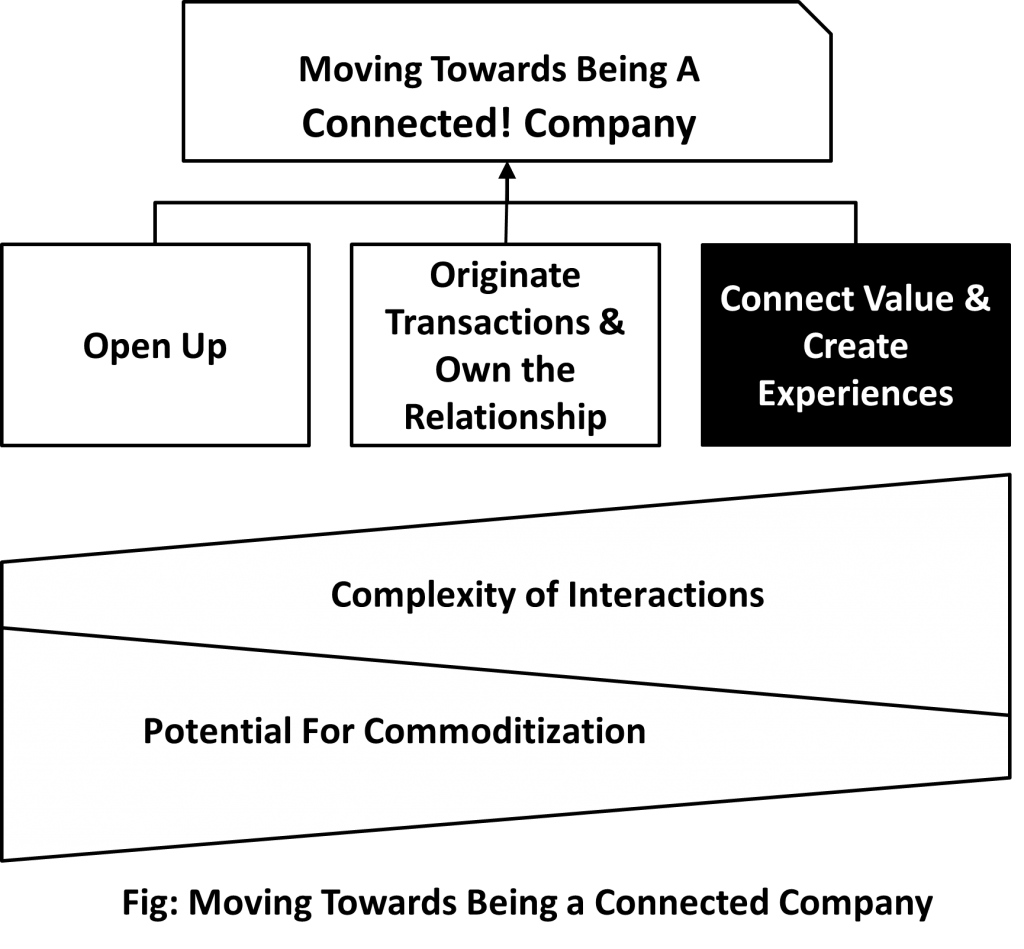
The world is becoming connected. Industry boundaries are crumbling. But there is one significant fallacy that has distracted us and steered us in the wrong direction. We’ve been too focused on being accessible and interacting with our customers on the different media and channels. As a result we’ve forgotten that what the customers really need from us is to adapt and respond to the new ways of helping them. We’ve forgotten to help our customers achieve their goals. While the smart ones have focused on meeting customer goals, the rest of us have fallen prey to the technology innovation and customer experience game. You cannot be using outdated digital maturity models. In fact, remember this, the question is not about digital strategy, its about a strategy for the digital world.
Its time to take stock, and rediscover our goals and reset the compass. Connected! is meant to do exactly that. Get the book here, and subscribe to the email list to help shape the book for our own collective future.

